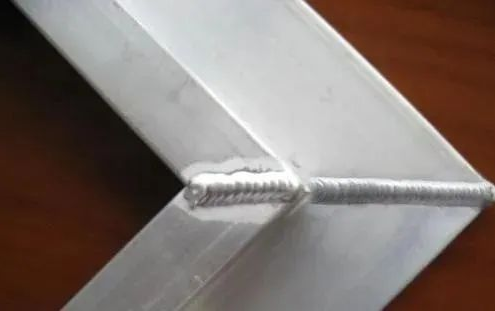How can we effectively prevent aluminum and aluminum alloys from producing weld heat cracks?
How to prevent aluminum and aluminum alloy welding hot cracks?
1. the selection of hot cracking tendency of small mother material, strict control of impurity content
Various aluminum alloy welding hot cracking tendency is different. One of the smaller hot cracking tendencies is industrial pure aluminum and antirust aluminum. However, in the Al-Mg alloy in rustproof aluminum when the mass fraction of Mg is 2%~3%, the tendency of hot cracking is also relatively large. Heat-treated reinforced aluminum alloys generally have a greater tendency to thermal cracking. Therefore, as a welded structure with more rust-proof aluminum, 2A16 (LY16) and Al-Zn-Mg alloy; followed by 6A02 (LD2), 2A14 (LD10), 2A11 (LY11) alloy; 2A12 (LY12), 7A04 (LC4) alloy is mainly used for resistance welding structure.

2. the correct choice of filler metal
When the base material is determined, the correct choice of filler material is the key to preventing thermal cracking.
Generally speaking, filler metals can play a role in preventing thermal cracking from the following aspects:
① Increasing the number of low melting point eutectic, cracks plays a “self-healing” role.
For example, some hot cracking tendency of hard aluminum alloys, weld composition in the original alloy system is difficult to adjust the effect, but if ωsi5% of the Al-Si wire (SAlSi5) welding, as a result of the formation of more low-melting point eutectic, can be “self-healing”, and thus have a higher resistance to thermal cracking.
②Denaturation of the weld.
Aluminum alloy wire almost all Ti, Zr, V, B, and other trace elements, are generally added as a densification agent. These elements can form fine particles of refractory intermetallic compounds with Al and play the role of non-spontaneous crystallization core, thus refining the grain, evacuating the low melting point eutectic, and improving the weld’s resistance to thermal cracking.
③ Reduce the effective crystallization temperature interval.
For example, for welding Al-Cu-Mg system hard aluminum and the development of B61 wire to join the Ni, Mn and Ti elements, Ni and Al, Cu can be packaged crystal reaction, the formation of complex intermetallic compounds (CuAlNi), can improve the solid-phase line temperature, so that the effective crystallization temperature range is reduced, coupled with the Mn and Ti can refine the grains, and thus improve the weld’s resistance to thermal cracking.
3. the correct choice of welding methods and welding parameters
The use of heat concentration of the welding method can realize fast welding and can prevent the formation of the strong direction of the coarse columnar crystals, so you can reduce the tendency to thermal cracking, such as TIG or MIG welding tendency to warm up much smaller than gas welding.
In the choice of welding parameters, it is appropriate to choose a smaller welding current and slower welding speed. Because the current is too large not only to make the molten pool overheating, and columnar crystals coarse, and will increase the fusion ratio, so that the hot cracking tendency of the base material is too much into the weld, and thus the hot cracking tendency to increase; Welding speed is too fast, it can improve the weld in the process of crystallization of the strain rate, but also make the hot cracking tendency to increase.


